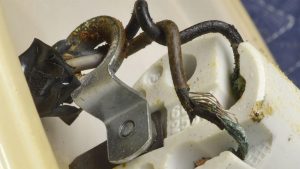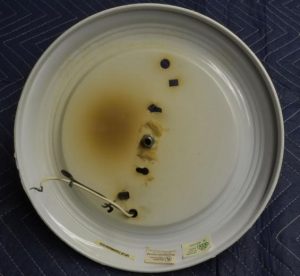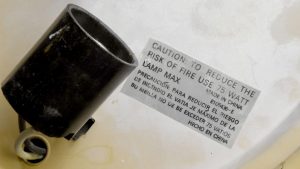Ceiling Mounted Luminaries

Years of using oversized wattage lamps in enclosed ceiling-mounted luminaries may have caused serious damage to the fixture’s parts, including its wiring and even the building wiring in the ceiling outlet box. Improper repairs to the luminaries over the years and removal of heat-reducing insulation pads may have increased the fire and shock risks. In addition to providing an energy-efficient lighting installation, damage from years of disregard for the unit’s thermal limits may need to be corrected to provide a shock and fire safe installation for the future.
HEAT Damage on Ceiling Side of Luminary
This is what the underside of a ceiling-mounted luminary looks like after years of operating with oversized wattage lamps. (See Image Below )
This luminary is UL listed for use with no more than a 75W lamp. But when occupants need more light, they frequently install 100W or 150W lamps in these types of luminaries.
PROBLEM: Trapped Heat

HEAT DAMAGE – Underside of ceiling-mounted luminaire
Most kitchen luminaries have a decorative glass or plastic globe that covers the lamps.
This traps much of the lamp heat within the enclosed canopy. As the heat rises upward, most of it is directed toward the luminary wires and the building conductors in the outlet box. The excessive trapped heat (operating for many years) frequently damages the building conductor insulation in the ceiling outlet box. In many cases, the building conductors entering the outlet box must be replaced or cut back to sound insulation.
SOLUTION: Use Correct size lamp wattage

NEC Sec. 410.74(A) requires that the luminary manufacturer mark the maximum lamp wattage or electrical rating on the unit. The proper lamp wattage size requires the installer to know the rated wattage limit and then not exceed it.
Mike Mazzamurro – Master Electrician


